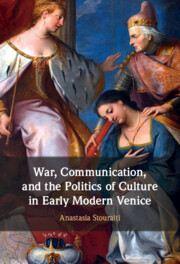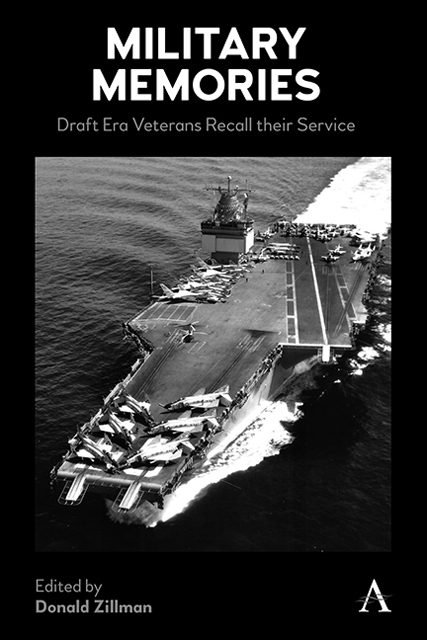Refine search
Actions for selected content:
15401 results in Military history
3 - Selling Armaments in Britain 1901–1918
- from Part I - Selling at Home
-
- Book:
- The Business of Armaments
- Published online:
- 19 January 2023
- Print publication:
- 19 January 2023, pp 81-125
-
- Chapter
- Export citation
Abbreviations
-
- Book:
- The Business of Armaments
- Published online:
- 19 January 2023
- Print publication:
- 19 January 2023, pp xi-xi
-
- Chapter
- Export citation
figures
-
- Book:
- The Business of Armaments
- Published online:
- 19 January 2023
- Print publication:
- 19 January 2023, pp xii-xiv
-
- Chapter
- Export citation
8 - Foreign Policies for Selling Arms to the Ottoman Empire/Turkey
- from Part II - Selling Abroad
-
- Book:
- The Business of Armaments
- Published online:
- 19 January 2023
- Print publication:
- 19 January 2023, pp 288-335
-
- Chapter
- Export citation
5 - Selling Armaments in Britain 1936–1955
- from Part I - Selling at Home
-
- Book:
- The Business of Armaments
- Published online:
- 19 January 2023
- Print publication:
- 19 January 2023, pp 176-210
-
- Chapter
- Export citation
Conclusions
-
- Book:
- The Business of Armaments
- Published online:
- 19 January 2023
- Print publication:
- 19 January 2023, pp 336-351
-
- Chapter
- Export citation
2 - Selling Armaments in Britain 1860–1900
- from Part I - Selling at Home
-
- Book:
- The Business of Armaments
- Published online:
- 19 January 2023
- Print publication:
- 19 January 2023, pp 37-80
-
- Chapter
- Export citation
Part I - Selling at Home
-
- Book:
- The Business of Armaments
- Published online:
- 19 January 2023
- Print publication:
- 19 January 2023, pp 15-210
-
- Chapter
- Export citation
Dedication
-
- Book:
- The Business of Armaments
- Published online:
- 19 January 2023
- Print publication:
- 19 January 2023, pp v-vi
-
- Chapter
- Export citation
Index
-
- Book:
- The Business of Armaments
- Published online:
- 19 January 2023
- Print publication:
- 19 January 2023, pp 375-388
-
- Chapter
- Export citation
Copyright page
-
- Book:
- The Business of Armaments
- Published online:
- 19 January 2023
- Print publication:
- 19 January 2023, pp iv-iv
-
- Chapter
- Export citation
6 - Foreign Policies for Selling Armaments to Latin America
- from Part II - Selling Abroad
-
- Book:
- The Business of Armaments
- Published online:
- 19 January 2023
- Print publication:
- 19 January 2023, pp 213-257
-
- Chapter
- Export citation
Introduction
-
- Book:
- The Business of Armaments
- Published online:
- 19 January 2023
- Print publication:
- 19 January 2023, pp 1-14
-
- Chapter
- Export citation
Contents
-
- Book:
- The Business of Armaments
- Published online:
- 19 January 2023
- Print publication:
- 19 January 2023, pp vii-vii
-
- Chapter
- Export citation
Figures and Tables
-
- Book:
- The Business of Armaments
- Published online:
- 19 January 2023
- Print publication:
- 19 January 2023, pp viii-viii
-
- Chapter
- Export citation

Borders on the Move
- Territorial Change and Ethnic Cleansing in the Hungarian-Slovak Borderlands, 1938-1948
-
- Published by:
- Boydell & Brewer
- Published online:
- 17 January 2023
- Print publication:
- 01 December 2020

War, Communication, and the Politics of Culture in Early Modern Venice
-
- Published online:
- 15 January 2023
- Print publication:
- 05 January 2023

Military Memories
- Draft Era Veterans Recall their Service
-
- Published by:
- Anthem Press
- Published online:
- 13 January 2023
- Print publication:
- 13 September 2022
Chronology
-
- Book:
- War, Communication, and the Politics of Culture in Early Modern Venice
- Published online:
- 15 January 2023
- Print publication:
- 05 January 2023, pp xii-xiv
-
- Chapter
- Export citation
Bibliography
-
- Book:
- War, Communication, and the Politics of Culture in Early Modern Venice
- Published online:
- 15 January 2023
- Print publication:
- 05 January 2023, pp 234-283
-
- Chapter
- Export citation
